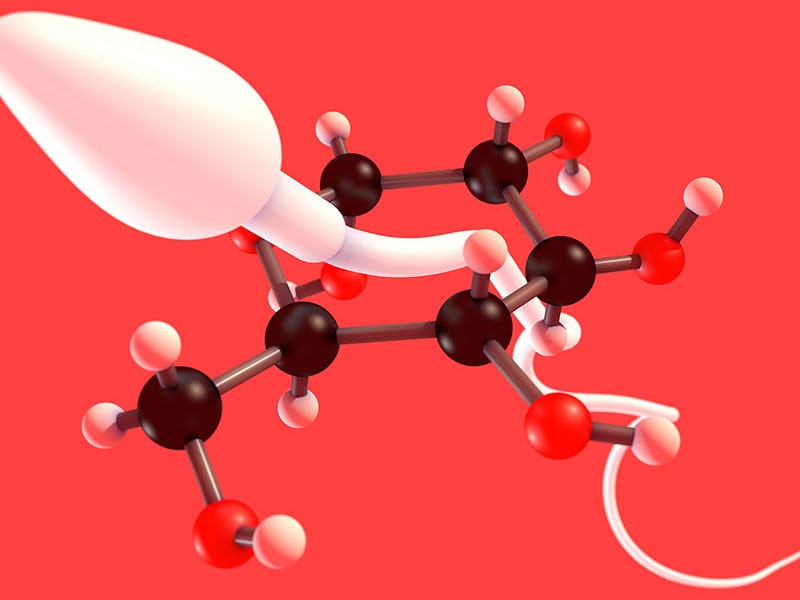Better fertility treatment for men could keep sperm swimming straight
Sperm that lack this essential ingredient end up swimming in circles.

When it comes to fertility treatments, the plethora of options offered to women range from freezing eggs to shooting up hormones to increase the likelihood of pregnancy. Fertility treatment options for men, meanwhile, remain more limited.
However, a new study suggests that, with a new understanding of a critically important protein known as voltage-sensing phosphate, or VSP, new treatments for men could be on the horizon.
While VSP has been known to exist, scientists haven’t known what exactly it does. Now, a team led by researchers at Osaka University have found that, essentially, VSP keeps sperm from going off the rails and missing their mark. This research was recently published in the Proceedings of the National Academy of Sciences.
The ultimate goal of sperm is to fertilize an egg. To reach their dream destination, swimming sperm are propelled up the fallopian tube by long tails called flagella. When they are close to the egg, calcium ions trigger the sperm into hyper-speed, “turbo-charging” the fertilization race in a process called capacitation.
Here are some sperm.
VSP helps sperm sense this electrical signaling and ramp-up speed, a conclusion these scientists reached by examining a line of VSP-deficient mice. That means that their sperm operated without the protein. In turn, they found that the sperm of the VSP lacking mice ended up swimming in circles and, more often than not, couldn’t fertilize an egg.
Researchers also observed that a lipid molecule called PIP2 was more abundant and dispersed in VSP-lacking sperm. In sperm without the VSP defect, PIP2 is typically concentrated near the top of the flagella, closer to the head of the sperm.
This structural difference suggests not only does VSP make sperm chase their tails, but it also influences PIP2’s distribution and changes how flexible a sperm’s tail is. Those changes mean that the turbo-charging effect never kicks in completely, and sperm have a much more difficult time reaching their intended destination.
If the same results were replicated in humans, this means men with VSP-deficient sperm may have more trouble getting their partners pregnant. This study suggests in the future when fertility doctors consider men’s sperm count, quality, and motility, they may want to add VSP to their list of things to keep an eye on.
Abstract:
The voltage-sensing phosphatase (VSP) is a unique protein that shows voltage-dependent phosphoinositide phosphatase activity. Here we report that VSP is activated in mice sperm flagellum and generates a unique subcellular distribution pattern of PtdIns(4,5)P2. Sperm from VSP−/− mice show more Ca2+ influx upon capacitation than VSP+/− mice and abnormal circular motion. VSP-deficient sperm showed enhanced activity of Slo3, a PtdIns(4,5)P2-sensitive K+ channel, which selectively localizes to the principal piece of the flagellum and indirectly enhances Ca2+ influx. Most interestingly, freeze-fracture electron microscopy analysis indicates that normal sperm have much less PtdIns(4,5)P2 in the principal piece than in the midpiece of the flagellum, and this polarized PtdIns(4,5)P2 dis- tribution disappeared in VSP-deficient sperm. Thus, VSP appears to optimize PtdIns(4,5)P2 distribution of the principal piece. These results imply that flagellar PtdIns(4,5)P2 distribution plays important roles in ion channel regulation as well as sperm motility.